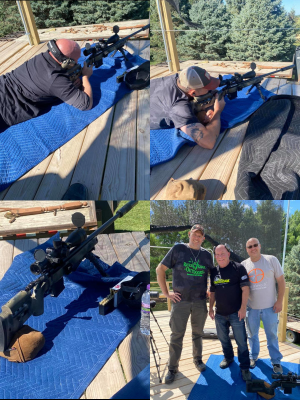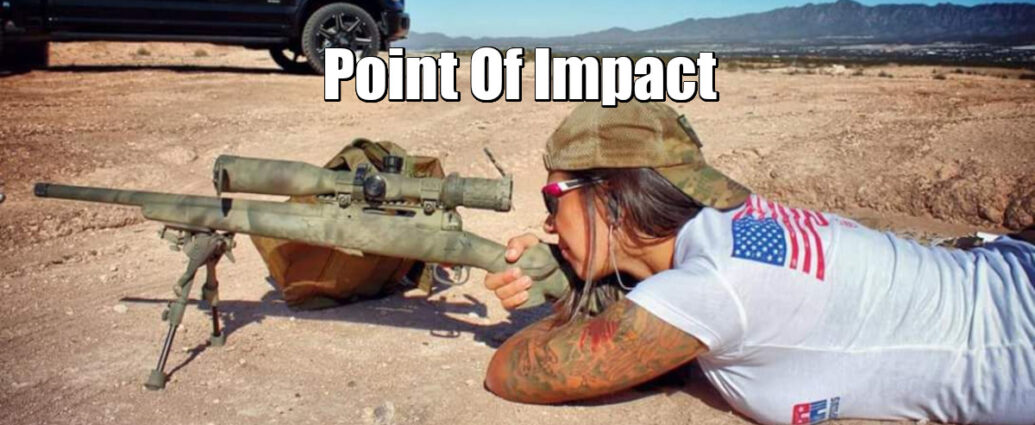Windage and elevation, Mrs. Langdon, windage, and elevation.” That sage advice came from Col. John Henry Thomas (John Wayne) in “The Undefeated,” a film set in the era immediately after the Civil War, but it seems particularly appropriate today when many shooters prefer adjusting their scopes for windage and elevation.
Of all the skills most highly prized by both soldiers and hunters, marksmanship would be at the top of that list. In both instances, your life may hang in the balance based on your proficiency with a weapon. The rounds of a soldier at war must accurately find their target, and hunters bullet must be accurate or an individual might starve to death in extreme cases. Some believe people are born a great marksman, while others feel it’s a learned skill. Many factors go into this equation, and I think there is an equal balance of having a learned skill while using the proper tools. Inadequate equipment may challenge the best shooters’ success, while great equipment can turn an average shooter into a great marksman.
No matter how much a person thinks they know about a topic, they could always learn more and become better students when instructed by the right teacher. Fortunately, I was able to find Mark Peterson, who runs Point Of Impact Long Range Shooting School in New Albin, Iowa. Mark is a very humble man that has spent the past 25 years working on marksmanship and all the variables contributing to being a great shooter. Before meeting this teacher, I was able to view the video on YouTube in which a group of kids not older than age 13 spent the day at this range, and by day’s end, they were all hitting a target at 1000 yards. Any deer hunter looking into a field at distances of 200 to 300 yards knows that is a respectable long target to hit period now double that distance to 500 or 600 yards and doubt creeps into the formula. Beyond 600 yards, the naked eye sees less and less, while I would venture to say without excellent optics, most people will never shoot beyond that 600 yards. Admittedly I was very skeptical when we got to the range and stood on top of the shooting platform while asking where the 1000 yard target was. I had an idea from the description but could not see it with the naked eye.
As we unpacked the gear for the day shoot, I sat in the equipment trailer with Mark as he began to explain from the beginning all the variables that would make up the day’s events and decide my success or lack of with the far-off targets.
 My instructor informed me that although we would be learning how to shoot a very long distance; everyone must give serious thought regarding what an ethical shot is regarding hunting situations. Just because your rifle can shoot that far, does not mean on your next antelope trip, you should attempt to harvest an animal that distance. A more reasonable situation would involve stalking that animal and very confidently making a great shot at 400 yards. In addition to ethical shots, proper equipment choice, and everyone should understand their chosen hunting tool’s limits. Once deciding you have the rifle to do the desired job, you must think about which bullet combination will most effectively travel the distance and still perform the intended task. Many bullet factors, including weight, grains, bullet design, and their varieties, all perform slightly differently.
My instructor informed me that although we would be learning how to shoot a very long distance; everyone must give serious thought regarding what an ethical shot is regarding hunting situations. Just because your rifle can shoot that far, does not mean on your next antelope trip, you should attempt to harvest an animal that distance. A more reasonable situation would involve stalking that animal and very confidently making a great shot at 400 yards. In addition to ethical shots, proper equipment choice, and everyone should understand their chosen hunting tool’s limits. Once deciding you have the rifle to do the desired job, you must think about which bullet combination will most effectively travel the distance and still perform the intended task. Many bullet factors, including weight, grains, bullet design, and their varieties, all perform slightly differently.
Interestingly enough, identical guns may shoot the same load slightly differently. Only through much practice and trying different combinations you will find that magic round to do all you ask. Harvesting a trophy elk at several hundred yards require other variables than a person who is punching paper at 1000 yards.
If you’re confident with your homework for bullet and gun choice, then optics is an essential factor for the job you wish to accomplish. Putting a scope with poor optics on the best of rifles will never allow you to see your rifle’s excellent performance. You can put a great scope on a decent gun with full confidence in your equipment, doing all you ask.
If you’re confident in the choices made for equipment, I also recommend assembly by someone well versed in getting the most out of your equipment. Once you have the setup the way you want it, the next variable will be human error or interaction. This article will give a person a basic understanding of what’s involved in accomplishing a 1000 yard shot. This information is not a complete source for every detail involved in this type of shooting that would entail multiple articles breaking down the multi-facets that make up this challenge.
In earlier days, a person might attend a military shooting school for approximately two weeks; of that time, the first several days would be spent with a notebook taking readings and math calculations on the bullet’s performance during daily shooting conditions. Fortunately, phone apps can be downloaded to one’s phone with all ballistic data, allowing a person to dial in their scope based on the information they enter and shooting at a known distance. For those not trusting access to their phone, you could print this information on a notecard and clear tape it to your hunting rifle’s stock if you can’t access your phone in the wilderness.
Additional important factors include proper breathing techniques, positioning your body to have the most contact points, which allows for a better shot. Correct trigger squeeze is also an essential part of the puzzle and identifies terrible habits such as flinching, jerking, and grabbing. I recommend shooting with a partner to help identify problem areas and use a spotting scope. to aid and react in shot placement for the target.
I learned that a properly adjusted trigger on a good gun could make an average to good shooter a much better shooter immediately. There are so many things that go into being a great shooter that I feel remiss in not touching on more of these in detail. Lastly, I cannot thank Mark enough for all the things he talked to me while stressing a person is never too old to learn or improve skill sets. All hunters and fans of the shooting sport owe it to themselves to take a class like this, I guarantee you will learn a great deal.
Keep your powder dry, and your bullets true.
By Rick Pedersen | Photos: Rick P | Originally published 2020 – UniMinds Media

